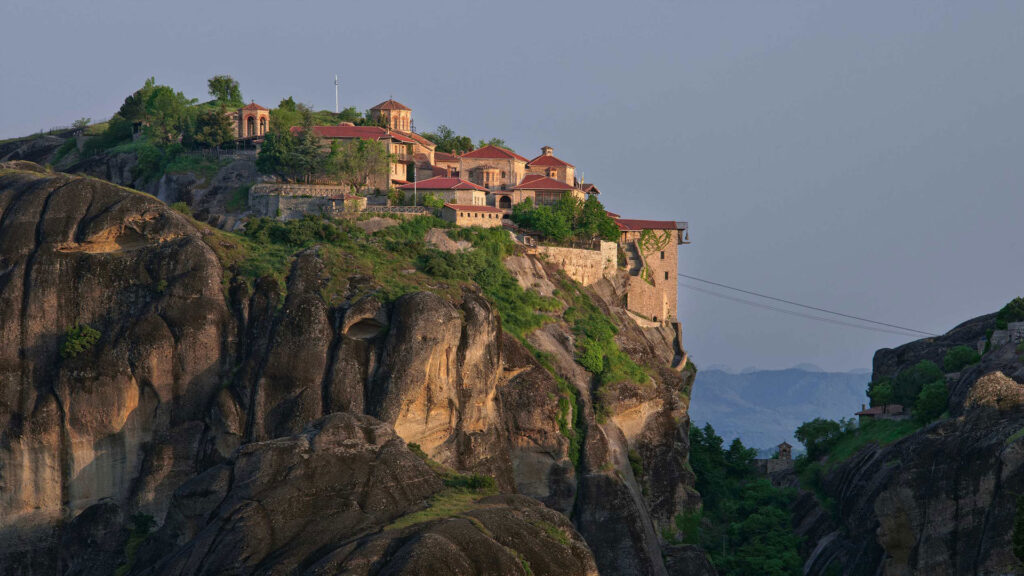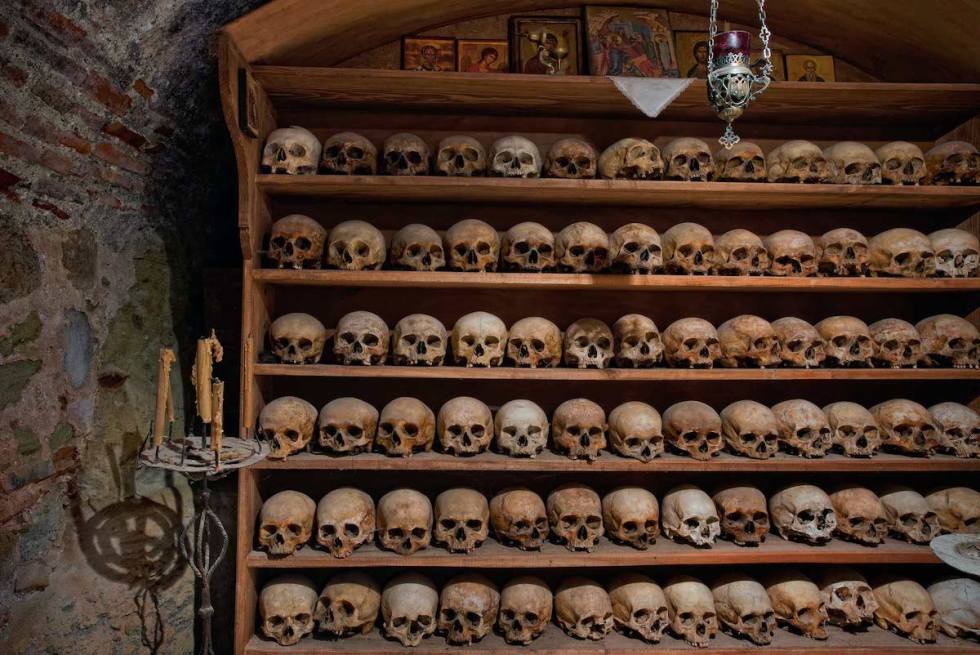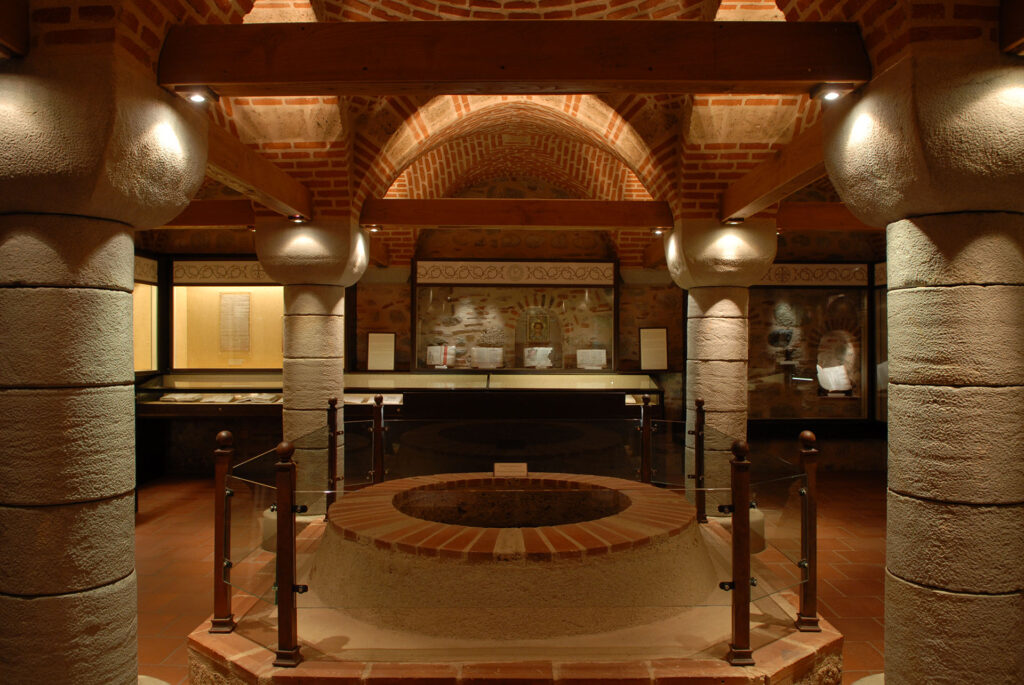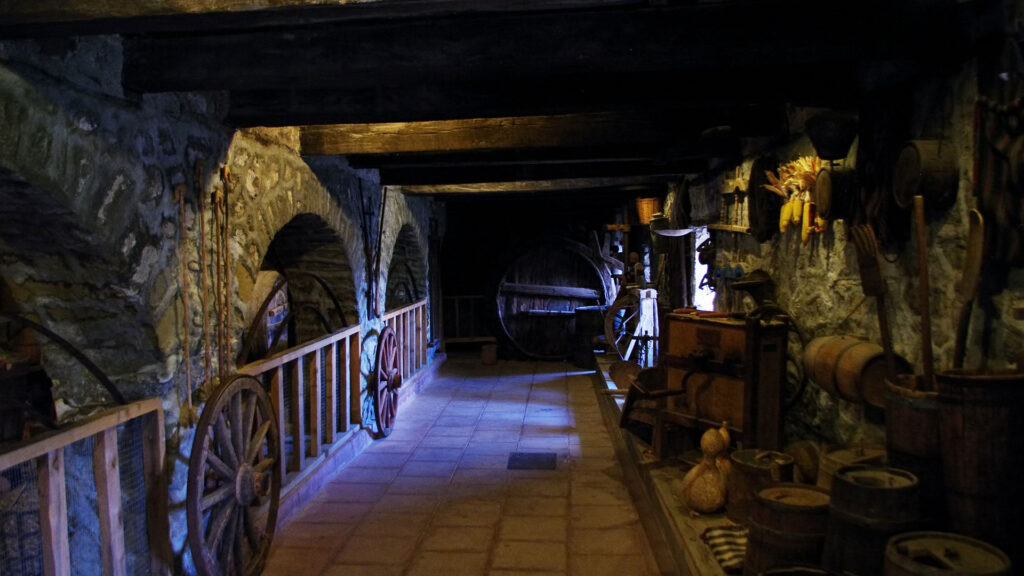
- Home
- The Great Meteoron Monastery, Meteora UNESCO Heritage Site
- Posts
- The Great Meteoron Monastery, Meteora UNESCO Heritage Site
The Great Meteoron Monastery, Meteora UNESCO Heritage Site

Definitely the biggest and one of the most impressive monasteries in Meteora is the Holy Monastery of Transfiguration of Jesus, best known as Great Meteoron.

The monastery was constructed on top of the biggest rock named accordingly “Platis lithos” or “Wide Rock”, having a total area of more than 50 acres and height reaching more than 613m above sea level.
The first to climb “Platis Lithos” was the monk Athanasios, a prominent ascetic figure of the Meteora’s early hermitic community who later became a Saint of the Greek Orthodox church. He was to be followed by other 14 monks and in 1340 AD they manage to build Theomitoros (God’s Mother) church, thus organized into the very first systematic monastic community in Meteora. Later on, founder St Athanasios constructed a second church dedicated to the Transfiguration of Jesus Christ and this church became the Catholicon of the monastery from which the monastery took its name.
St Athanasios’s successor and the second proprietor of the Great Meteoron monastery was the monk Ioasaf (Ioannis Uros), the son of the Serbian-Greek king Symeon Uros Paleologos who supported the monastery financially.
In those early times, access to the monastery was achieved only through wooden ladders, ropes and nets. That was the case up until very recently and only in 1923 did they build the 146 stairs one has to climb to reach the monastery.

The cofounder monk Ioasaf completed and frescoed the Catholicon of the monastery in the year 1484 AD. Stories and spoken tradition in the area narrate the huge difficulties those early monks faced in building the monasteries and the need of a 25 to 30 years period to assemble all the necessary materials on top of these huge rocks and another 20 to 25 years of very hard labor in almost isolation to complete the monastery. A great leap of faith was needed by anyone in order to undertake such a monumental task and with such sparse resources to utilize for the construction, while at the same time most of the 14 monks who initially followed Athanasios they never lived long enough to see the monastery being completed!
The nave of the Catholicon is bright and filled with frescoes. The iconostasis is beautiful and elegantly carven and glided constructed in 1617 AD and includes images taken from the flora and the animal kingdom. Another great sample of elegant wood carving can be seen on the Episcopal throne which was constructed the same year as the iconostasis.

There are 3 chapels at Great Meteoron monastery: The chapel of John the Baptist, the chapel of St Constantine and St Helens, of which the latter was built in 1789 and it is characterized by its polygonal domed basilicas. The third chapel of the monastery is dedicated to St Athanasios.
Priceless are the treasures of books and manuscripts being preserved in the monastery’s library. Byzantine and post-Byzantine era manuscripts and documents, books concerning the function of the monastery, patristic texts, hymnographical, rare incunabula of the 15th-19th century, legal documents, as well as classical ancient texts of Homer, Sophocles, Demosthenes, Hesiod, Aristotle, and many writers and authors from Hellenistic times. The monastic library is one of the wealthiest of its kind.

The monks follow strict regulations and gather at the church 4 times a day, Orthodox liturgy lasts about 6 hours a day. The practice of the monastic life, which is the monks’ main concern, is in absolute agreement with the imperative morals of the Holy Fathers of the Greek Orthodox Church.

There is both social activity and spiritual support of the pilgrimages, which stems from our saints’ miraculous grace. The monastery has offered a great deal to our nation, education and our culture. It constitutes a vibrant monastic community for more than six hundred and fourteen years, a bastion of true Christianity and the traditions of Hellenism.

Monks devoted to Christ, carrying prayers in their hearts and building materials on their backs, renovate, restore and preserve the monastery, celebrating its beauty. As a result, every year, pilgrims and tourists are getting overwhelmed by the great mission undertaken there, making Great Meteoron one of the most visited monasteries of Greece.
Visiting Hours
Summer timetable
Visiting Hours: 09:00 to 15:00.
The monastery stays closed on Tuesdays.
Winter timetable
Visiting Hours: 09:00 to 14:00.
The monastery stays closed on Tuesdays, Wednesdays and Thursdays.
Comments
Add a comment
Leave a Reply · Cancel reply
You must be logged in to post a comment.
